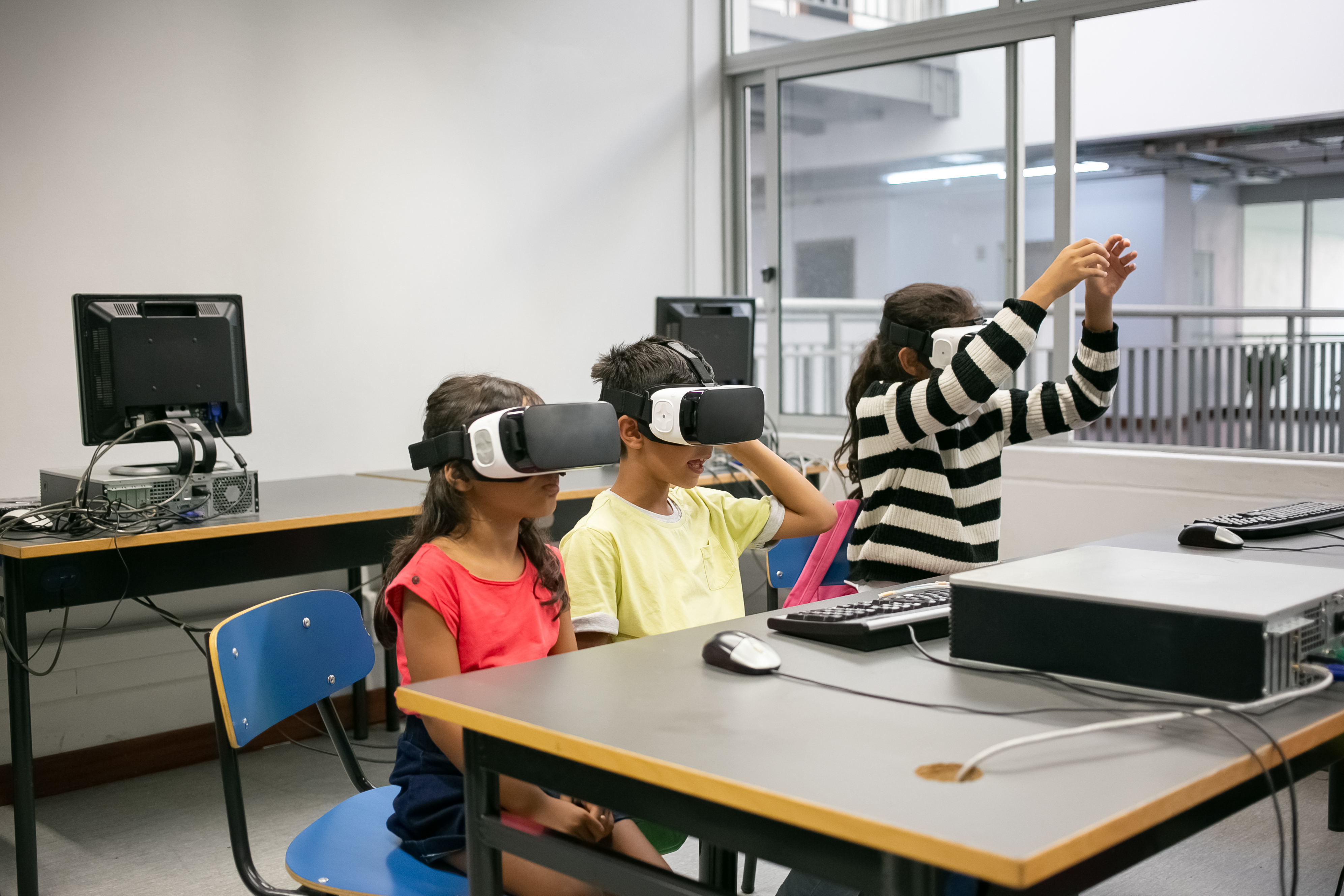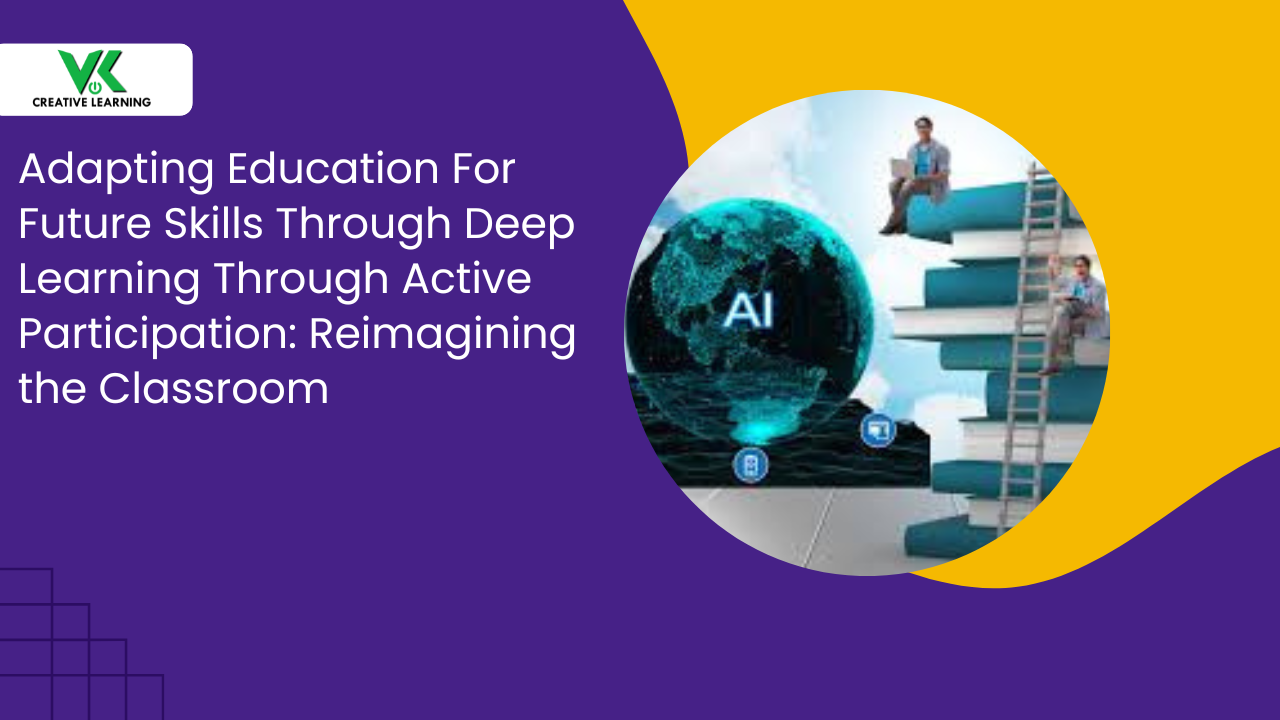Why AR Elearning for Schools and How They Can Help Students?
December 30, 2023
Traditional teaching methods relied heavily on the notion of following one-size-fits-all solutions most of the time. But with the advent of the new technologies, this changed significantly. To be precise, the adoption of adaptive learning technology helped the pupils to get what exactly they needed -- course material made as per their understanding capabilities.
This was primarily made possible through eLearning education for schools that focussed on providing customization of lesson plans. The results were appreciable and learners started performing well as chapters were designed to meet their needs.
Further, in the current times, this level of personalization has gone one level higher -- all thanks to the use of mobile devices. This allows children to get acquainted with new information as when they require it.
Best: with the introduction of AR technology in eLearning, the absorbing capability of the students improved massively. We shall discuss about Augmented Reality -- definition, what exactly is it; its benefits, and more in the subsequent sections.
Understanding AR Tech and Its Uses in Education
One must be wondering what exactly is this innovation, but there is nothing difficult about it; in fact, it simplifies the overall information-gathering process.
Elaborately put, it overlays the digital content related to the objects seen in the real world. This means that when you use a handheld device like a mobile and point toward any physical object, it provides information about that particular material.
This way the students can easily get information about the physical entities or any surrounding elements. Hence, they would completely understand what the object is; its properties; structure, and many more features associated with it -- sounds fascinating and extraordinary, doesn't it?
Its real-life application includes utilizing augmented tech to understand any intricate biological concept in three dimensions instead of just going through the textual material or two-dimensional diagram.
Similarly, during a history class, a teacher can show how the ancient civilization lived their life by visiting a site and pointing the handheld device to any objects present there. This will help learners to understand how during the olden times, people used different tools and managed their daily tasks. This is more like reconstructing virtually everything before the students' eyes.
Benefits Associated With the Use of AR-Oriented Virtual Platform
There aren't just not or two but multiple benefits when it comes to using augmented reality in the eLearning courseware and they have been explained hereunder
Interactivity: With the computer-mediated reality, it becomes easy for the learners to grasp the information as some form of interaction happens. In fact, it gives an opportunity for the students to explore all the things around them just by pointing the tab or mobile at them to understand the topics that are complex in nature.
To make the point clear: The platform can be used to understand plant biology or to get a better comprehension of celestial bodies in the sky. This would turn out to be an immersive experience and also aid the learners to soak in the concepts quickly.
High Level of Engagement: This kind of technology which gives instant information about everything around us when focused can immensely help to capture bright minds’ attention. Importantly, they would not only marvel to see such remarkable wizardry at their fingertips but also a curiosity is created to learn more.
For example, when the children get to know the cell biology/structure of a leaf through the handheld device by aiming at it, a fresh interest will arise in them to explore the remaining parts of the plant.
Catering to Diverse Learning Styles (Visual and Kinesthetic Learners): This is one of the best aspects of an AR-based virtual learning platform.
Elaborately put, this massively helps the individuals who like to explore and learn through visuals or by looking at the 3D figures.
On the other hand, it also proves very advantageous for kinesthetic learners who like to absorb information practically.
Personalized Learning: When the content is created in such a way that students can smoothly understand detailed descriptions, images, or 3D multimedia visuals, it becomes easy for them to remember the information and recollect it when required.
Similarly for people who prefer description in their own local language, the same can be provided by the device.
On the other hand, for visually impaired individuals, it becomes more effortless to comprehend when everything is translated into verbal descriptions.
Collaboration: When knowledge-seekers have the opportunity to discuss any kind of topic among themselves, each of them can share their views on the objects observed via eLearning forums. This way many little geniuses come together and give their point of view to others which leads to collaborative study through the virtual model.
Preparing Students for the Future World: With children being exposed to advanced tech such as augmented reality at an early age, it helps them to gather valuable skills that can be helpful when they go for a job.
Importantly, this kind of advancement is not new to them when they step into the workplace and they become comfortable navigating such kind of innovative tools and can even envisage of contributing to or creating a new tool based on the technology.
Developing Innovative Skills: With the interactive digital learning environment, students are able to gather information to such an extent that they start believing in themselves and are not afraid to solve problems given to them. This way they develop the tendency to think differently -- can be referred to as critical thinking and their way of approach to solving complex problems changes completely -- more like professionals do.
To make this clear: When given a problem such as a chair on the floor and what force should be applied to move it, kids can turn into researchers and make use of the equations (given as a clue by the tool or some form of help) to figure out the solution.
Conclusion
When AR-based eLearning solutions are utilized for education purposes, it will help bright minds in many ways, especially in developing an understanding of new concepts (deciphering actually what objects mean and their nature) and remembering them.
This also helps hugely during exams as learners don't have to mug the textual content and importantly, what they see is something they are able to retain and recollect during the exams.
If you as a school want help in developing virtual platforms -- supporting AR tech, then you can contact VK Creative Learning.
VKCL has been one of the best instruction material providers since the past decade and it has helped many schools to make the swift shift to the new technologies smoothly.




